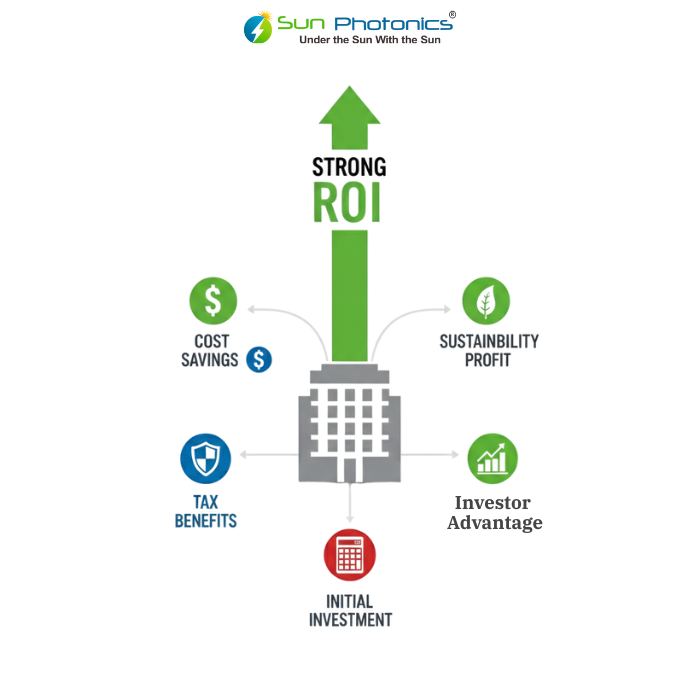Winters expose every weakness in a rooftop solar system — moisture, fog, temperature swings, metal
Read MoreIndia’s energy sector is transforming rapidly, and commercial rooftop solar has emerged as a core driver of this change. With installed rooftop solar capacity at 16.3 GW and the C&I segment growing at a record pace, businesses today have a golden chance to secure energy independence, save costs, and enhance sustainability.
As the demand for clean energy accelerates, C&I solar power in India is becoming a mainstream solution for cost-conscious, sustainability-driven businesses.
Switching to rooftop solar is not just an environmental decision—it’s a financial strategy.


Businesses today have multiple levers to maximize rooftop solar benefits:
Delhi : With 1,771 commercial rooftop solar connections, the city generates 81 MWp, saving businesses about ₹80 crore annually.
While rooftop solar is promising, businesses should plan for:
| Step | Why it Matters |
|---|---|
| Energy Audit | Determine optimal rooftop system size and savings potential. |
| Policy Review | Understand your state’s net metering and subsidy rules. |
| Choose Model | CAPEX for ownership, RESCO for zero capital. |
| ROI Analysis | Expect 20–35% returns and 3–5 year payback. |
| Compliance | Use MNRE-approved inverters with monitoring systems. |
| Plan O&M | Secure long-term operation and maintenance support. |
| Leverage ESG | Showcase sustainability gains to customers and investors. |
For businesses, commercial rooftop solar in India is more than an energy alternative—it’s a strategic growth driver. With strong ROI, tax benefits, evolving policies, and proven success stories, rooftop solar offers an unmatched opportunity to cut costs, boost sustainability, and future-proof operations.
For decision-makers evaluating business solar installation in India, the time to act is now.
Jatin Singh is a content developer at Sun Photonics Pvt. Ltd., specializing in creating impactful content for solar energy solutions. With a background in tech and health, he has previously worked in digital marketing and pharma. Passionate about sustainability, and currently exploring all things about solar!
Approval by an Expert:
“This content is reviewed and approved by Dr. Sujata Bhaker, who holds a Doctorate in Renewable Energy and brings over 10 years of industry expertise.”
A 1 MW rooftop solar system in India typically costs around ₹5 crore. With subsidies and tax benefits, businesses can recover costs within 3–5 years.
Industries in India can expect 20–35% ROI from rooftop solar, depending on system size, financing model, and state policies.
CAPEX is better for businesses seeking ownership and faster ROI, while OPEX/RESCO suits those preferring zero upfront investment.
Yes, rooftop solar is ideal for large energy consumers such as factories and warehouses, where it significantly reduces operational costs.
Winters expose every weakness in a rooftop solar system — moisture, fog, temperature swings, metal
Read MoreAs India accelerates its path toward clean and sustainable green energy, the role of Solar
Read MoreIntroduction: Why BIPV Is Gaining Traction in India (2026 Update)Cities are growing taller, streets are
Read MoreChoosing the Best Solar System for Industries is not just about going green — it’s
Read MoreRead our quick GEOA guide already? Cool. But this one’s built for people who need
Read More